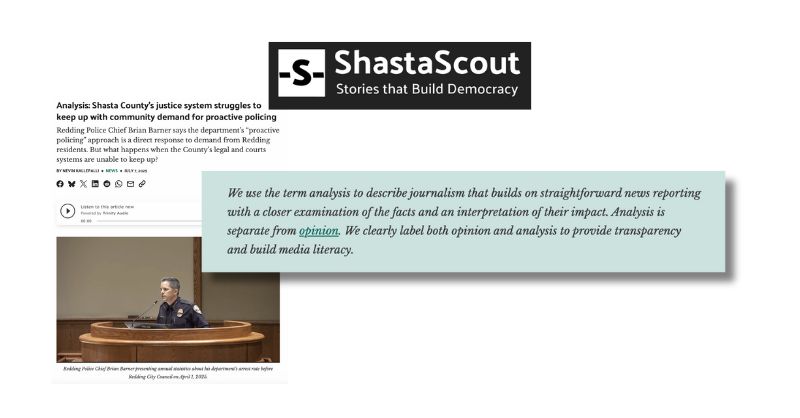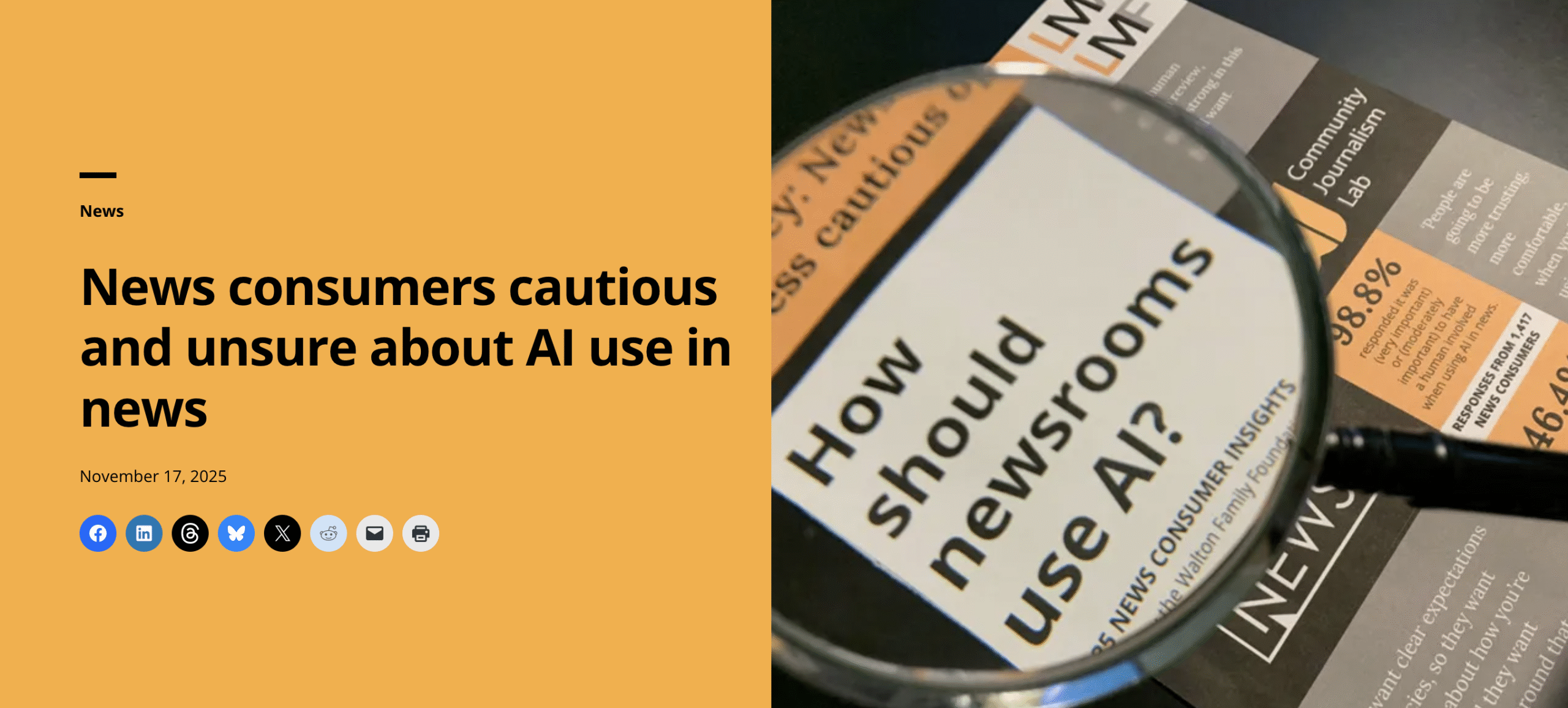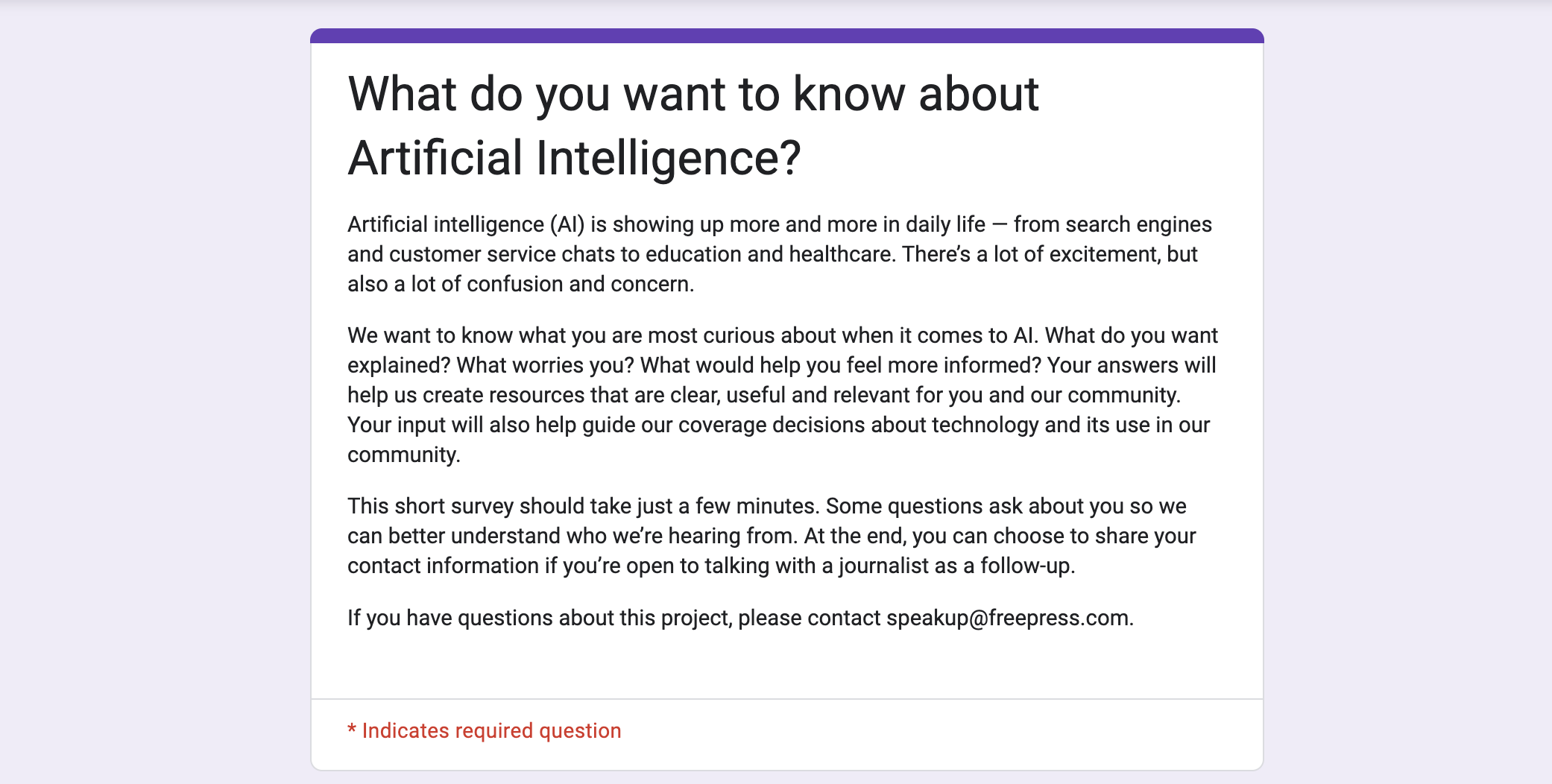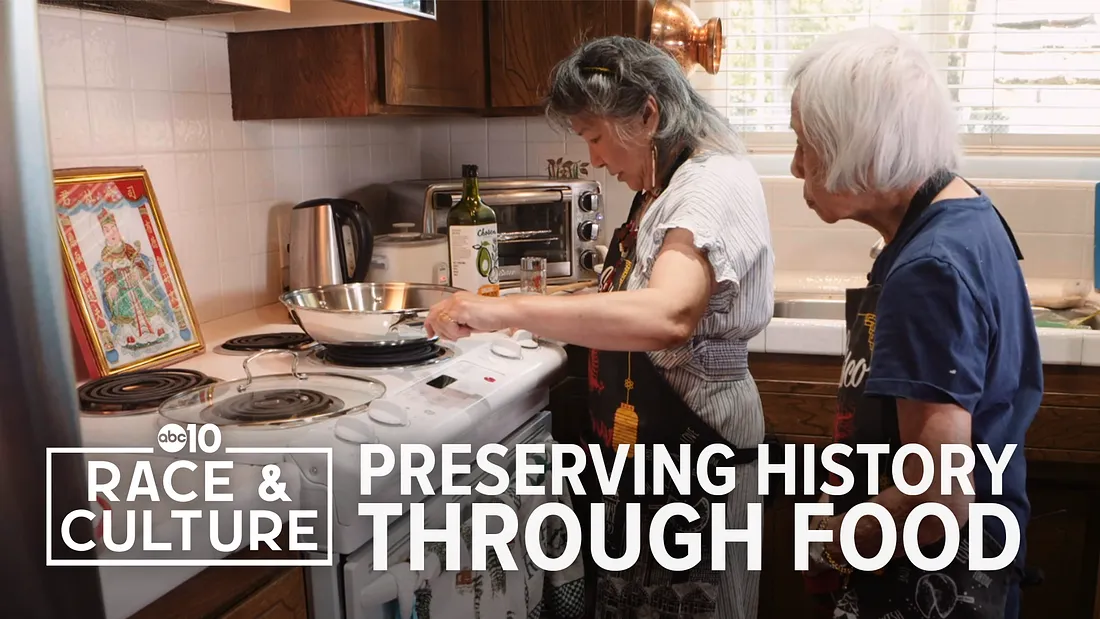
Discussing diversity issues and working to produce news coverage that more accurately reflects and depicts what is happening in your community can be a daunting task. While this work isn’t easy, at Trusting News, we believe it’s essential if you want to build trust with your community, engage with them and keep them informed through […]
How one TV newsroom is committing to inclusive reporting
Discussing diversity issues and working to produce news coverage that more accurately reflects and depicts what is happening in your community can be a daunting task.
While this work isn’t easy, at Trusting News, we believe it’s essential if you want to build trust with your community, engage with them and keep them informed through your stories. That’s why we have been collaborating with newsrooms to improve their engagement with communities of color, enhance staff diversity, and enable journalists to better represent and report on their multifaceted communities.
What does it look like for newsrooms to make a commitment to reaching out to people of color in their communities? To listening and understanding them? And, ultimately, to providing coverage that is more nuanced, more respectful, and more accurate?
A case study: ABC10 Sacramento
ABC10 Sacramento, a Tegna station, has implemented several initiatives to ensure transparency, accountability, and inclusivity in its reporting. The team was part of our Trust 101: Earning Trust With Communities of Color newsroom cohort and has been building on ideas developed during the training in order to build trust with its entire community, including communities of color.
The newsroom has been working toward these goals by creating a newsletter, talking about its mission and goals through transparent FAQs and consistent branding, community outreach and feedback forms/surveys. (Poynter recently highlighted ABC10’s work in this story.)
A Newsletter
The team created a Race and Culture newsletter to add more transparency and better explain the process behind producing particular stories.
Katie Kim, a producer for the team, said adding this type of transparency was particularly a top priority after the death of Tyre Nichols, a Black Sacramento native, who was beaten to death by police officers in Memphis, Tennessee. They used the newsletter and the on-air story to explain the “why” behind their approach to showing only certain parts of the footage. They also led with clear warnings about the footage being potentially traumatizing or harmful and included Black-affirming mental health resources.
“Overall, the newsletter doesn’t just showcase the work of the Race and Culture team but encompasses the efforts of the entire newsroom to produce content that serves and reflects our diverse communities across Northern California,” Kim said.
Gonzalo Magana, Director of Special Projects and Engagement for the TV station, said the newsletter has “also been an opportunity to highlight the work the entire news team is doing in the race and culture space.”
An FAQ & Branding
Stories produced by the Race and Culture team are all collected on one landing page. The page includes a link to sign-up for the newsletter and a link to an “About” page that includes photos and short bios of the team members and an FAQ about why the team was created and what they do.
On the page, the team also has a form embedded for people to share what issues, people and places they want to see covered.
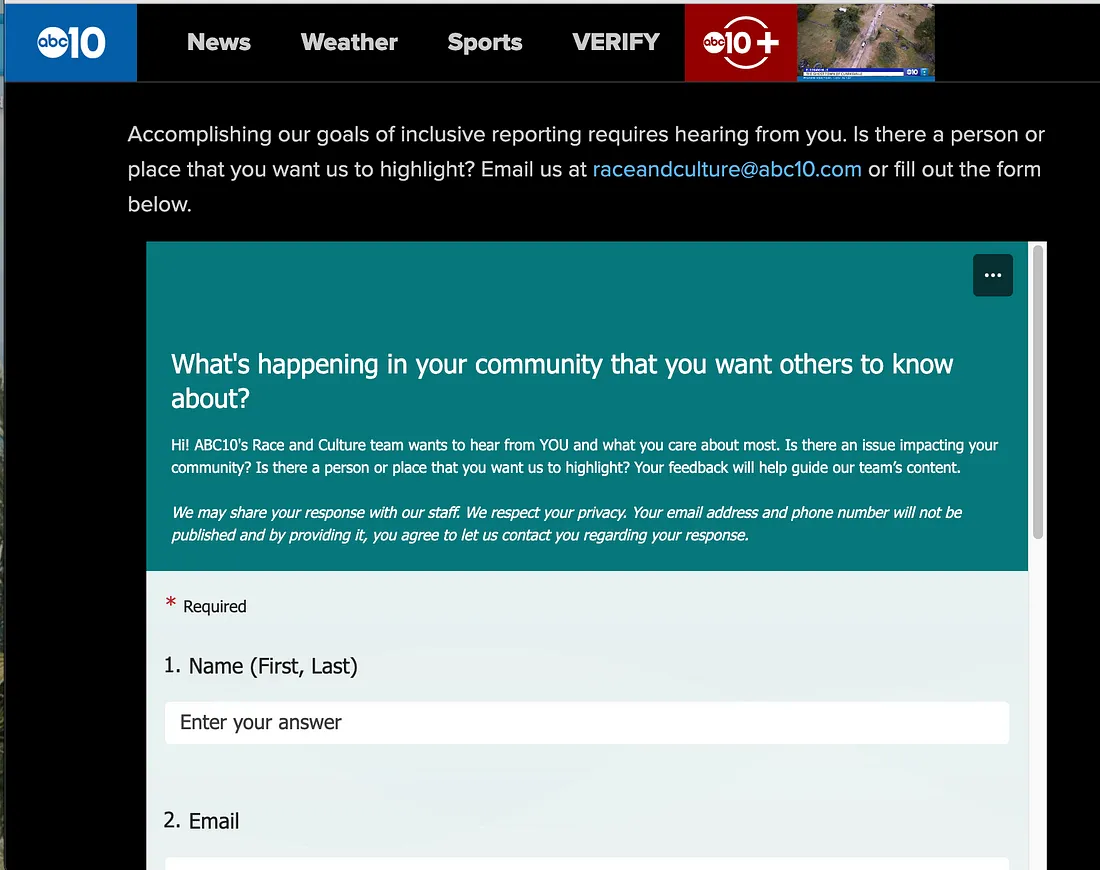
By sharing short bios and photos of team members, ABC10 humanizes the newsroom and emphasizes their willingness to engage with the community. This two-way communication approach fosters a sense of accountability and demonstrates that the newsroom values feedback and takes it seriously. The team shared some of this information in a photo series on Instagram and Facebook too.
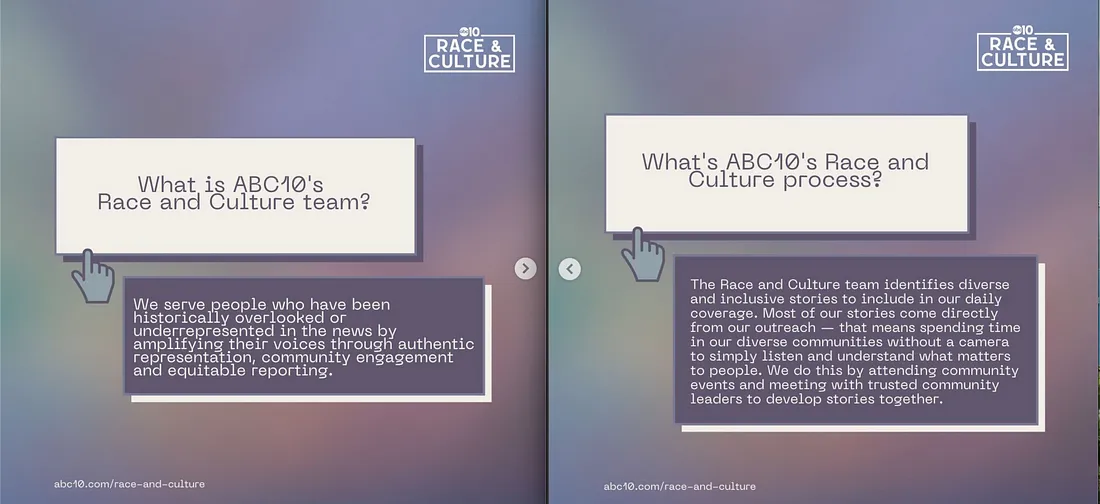
“We created the FAQ page as an accountability and trust-building exercise with the community,” Mike Bunnell, a content producer for the station said. “We want people to know why we do what we do and how we go about doing it.”
The team also created consistent branding that is used on-air. The branding signals to viewers the story they are about to see if part of the Race and Culture team. The consistency in the use of the branding, in addition to the on-air language they use, also helps the content stand out as something different and important.
Community outreach
Sabrina Sanchez, an engagement and special projects producer for the station, said the team works to identify diverse and inclusive stories to include in daily coverage.
Most of the stories, she said, come directly from outreach which “means spending time in our diverse communities without a camera to simply listen and understand what matters to people.” The team does this by attending community events and meeting with trusted community leaders.
“Through our outreach, we help the newsroom build trust within our communities and expand our list of diverse experts and local leaders who provide different valuable perspectives that add depth to our reporting,” Sanchez said.
According to Magana, the team brings story ideas and pitches back to the newsroom to include daily coverage.
“We discuss in all editorial meetings, (which) inclusive, race and culture and equitable stories we should be producing,” he said. “During breaking news and special events, we discuss DEI stories and angles to make sure these stories and voices are included in the coverage.” (We wrote about how ABC10 includes transparency in daily stories here.)
In some cases, he said, this means leaning on the community for editorial guidance, like making sure reporters and anchors are accurately pronouncing the names of individuals involved in stories.
Feedback forms/Surveys
Outreach also means making sure people can engage with the newsroom on all platforms. As the team revamped its brand to be more transparent and accessible, they are also asking the public to share what they are seeing in the community. They do this by embedding a callout form on each Race and Culture digital story, on social media and in on-air stories.
Ahead of the November 2022 election, the team attended events and gatherings in parts of North and South Sacramento (areas with lower voter turnout, according to the team). While attending the community events, they collected survey responses from community members so the newsroom. The Race and Culture team led the project, broke down the survey responses and shared what they were hearing with the rest of the newsroom so the community feedback could help shape the overall newsroom’s election coverage. (The team heard from more than 170 people and learned people wanted simple, plain language about state, county and city ballot measures.)
“Overall, community members were pleased to see ABC10 in the community to help people stay informed about the election and also know how to vote,” Sanchez said. “Several people also mentioned in their survey responses that our explainer videos on ballot measures and propositions were extremely helpful when they cast their ballots.”
A Q&A with ABC10’s Race and Culture Team, the journalists behind the work
Read the comments from the Race and Culture team below to learn more about the reporting process, workflow and what the response from the community and newsroom has been. (Comments are a collaboration from the whole team except where credited to a specific staff member.)
Trusting News would like to thank the entire Race and Culture team (Mike Bunnell, Gonzalo Magana, Katie Kim, Kandace Redd and Sabrina Sanchez) for their time, effort and dedication to building trust with their community through transparency and engagement strategies like this. Through this work, we are able to learn more about what works best to build trust with the public. Without their willingness to experiment, we would not be able to share what works best for building trust with the journalism community. If you are experimenting with building trust, let us know here.
What issue related to trust were you trying to solve? What were you hoping users learned or understood better by consuming this content?
Community Outreach: TV news stations have largely been responsible for perpetuating stereotypes or racism whether through crime coverage or largely focusing on communities of color when something traumatic or “bad” happens. To better serve our diverse communities, the Race and Culture team prioritizes being in the community. We reach out to community stakeholders and residents and learn about what’s important to them and how to help amplify their voices and perspectives through storytelling. Not only that, but we also table at community events to raise awareness about our team so people know they can come to us with positive things happening in their community or issues that we should know about. Our hope is that by doing consistent outreach, we can produce stories that are more reflective and representative of the diverse communities in our coverage area. — Sabrina
How would you describe the effectiveness of the content and strategy? Did you think it was effective? Ineffective?
An FAQ/Branding: While it’s never going to be as impactful or effective as our direct outreach efforts, the FAQ page and all of the information we provide in every story have been beneficial in helping us connect with individuals and organizations. It’s a more passive way of interacting, but it gives the community the time and space to embrace what we’re doing and interact with us on their own terms. They get to decide when and how much to trust us while hopefully allowing us to share our stories with them. — Mike
Community Outreach: From the beginning of creating our race and culture team we wanted to make sure that the work this group does impacts and touches our entire newsroom. These efforts are so important for all the work our news organization does and it helps us live our “We Stand for You” brand. The great thing about including the feedback from our engagement every day in all editorial meetings is that is not just the Race and Culture team doing these stories, our entire newsroom pitching and producing this content. The result has been very positive. In 2022 our newsroom produced over 500 Race and Culture stories. For us, that’s a huge success. —Gonzalo
Our team met our monthly goal to conduct outreach twice a month in the Sacramento community, especially in areas that have a high population of communities of color or neighborhoods from historically segregated neighborhoods. We fostered and cultivated relationships in the community before a story was turned. We worked on pitches and turned community-driven stories as a direct result of the outreach we prioritized. This was a newsroom-wide effort. Our team pitches stories that are featured on the 5 pm, 6 pm and 11 pm show as well as enterprise stories. —Sabrina
Please provide specific metrics or signs of success related to this content (or a summary describing the performance of the content). Please consider both quantitative data and qualitative feedback from journalists and news consumers.
Newsletter: The Race and Culture newsletter currently has 368 subscribers. From December 2022 to now, we have had 18 new subscribers.
In every newsletter, we include a feedback form to solicit story ideas from community members. Most recently, we were able to share the story of a woman who has been running a tiny home community in her backyard to support the unhoused, which came directly from the newsletter. After the initial story aired, our ABC10 team produced a follow-up piece about the impact our original reporting had. After the first story, Robin Moore, who runs the transitional housing community, received dozens of calls from people — some wanting to donate, others wanting to replicate what she has been able to achieve. In the second story, we provided resources for people who want to learn more about tiny homes as temporary shelters. —Katie
Community Outreach: By the end of the year, we had over 500 stories that were branded Race and Culture stories or had some sort of inclusive angle. Thanks to tracking stories, we were able to analyze the types of stories that included local events, culture/history, community investment, hate/racism/threats, localizing national and state news, showcasing studies, and accountability stories. —Sabrina/Katie
Describe what it was like to produce this content. Did it come easily to you? Was it challenging? Did it make you think differently?
Newsletter: While our Race and Culture producer is the main creator behind our bi-weekly newsletter, each edition — from story selection to copyediting — reflects the entire R&C team’s efforts. We’ve been able to establish a clear workflow with the newsletter to ensure adequate time to compile our best stories of the week and to consider feedback from all team members before publishing. This has allowed for the process to be easier over time. The most challenging aspect of producing our newsletter has been keeping it as concise and easy to read as possible. While we always have plenty of content we could feature in the newsletter, we aim to be selective with the stories we do feature, as well as the capacity in which we are highlighting the stories, so the newsletter doesn’t appear overwhelming for readers. — Katie
Can you describe how long producing this content took? Did you involve other members of your newsroom? If so, can you describe what that process looked like and how long it took?
Newsletter: Producing the newsletter generally takes about 4–5 hours, broken up over 2–3 days. The process includes story selecting, writing, creating graphics, and editing. Once the finished newsletter has been reviewed by the Race and Culture team, we pass it off to our Digital Executive Producer to copy edit and schedule to publish. —Katie
An FAQ/Branding: It took the core team a half-dozen review sessions over the course of three months before we had something we all agreed on. In a couple of cases, just getting through one paragraph took an hour, only to have it totally revised in a subsequent meeting. It was important to all of us and nobody complained, no matter how many times we tore something down and rebuilt it. —Mike
Community Outreach: Outreach is an investment and it needs to be integrated into a workflow in order for it to be successful — and that’s what we did as the Race and Culture team. At the very beginning of 2021, we created a strategy for how we were going to approach outreach, which changed over time with the capacity we had.
The producers made it a point to talk to two new people or conduct outreach at least twice a month. We consider what communities and/or areas have we already covered, what communities and/or areas could we cover better and/or what diverse communities and/or areas could we reach out to that we have not built relationships with yet. Then we conduct research about the communities and/or areas and identify a list of community stakeholders to connect with. The producers narrow it down to 2–3 people, groups or events.
When we talk to community members we will set up meetings whether in person or through a call. They will take notes during the talk. Producers will conduct research and craft a pitch that they will share at editorial meetings and management will then assign a reporter.
Would you use this trust-building strategy or content again? If so, would you do anything differently?
An FAQ/Branding: I don’t think every project would benefit from this process. Personally, though, for something where the goal is to establish the same high degree of trust, I wouldn’t change a thing. — Mike
How would you rate the difficulty of producing this content?
Newsletter: With the support of an entire team and adequate resources, producing the newsletter has become a relatively simple task. Generally, finding content to feature has not been a challenge with our dedicated R&C reporter and the efforts from the entire newsroom to push more Race and Culture content.
The most challenging part of the newsletter has been growing our audience. We are currently working on efforts to expand our readership through cross-promotion opportunities with other local organizations, as well as handing out newsletter sampler flyers at outreach events. —Katie
An FAQ/Branding: I wouldn’t call it difficult so much as painstaking. Given the level of passion everyone on the core team has for the project, the effort that went into the FAQ and branding didn’t surprise me at all. —Mike
How would you describe the user response to this content? If there are specific comments you would like to share, please share a link to the comment, screenshot, quote, etc.
Newsletter: Overall, our newsletter community still has plenty of room to grow. We don’t regularly receive feedback or form responses on all our published newsletters. However, we have received some positive feedback after we followed up with community members who submitted story ideas through the newsletter: “I am so thankful that you took the time to read my email, respond and meet a member of the community that does so much, especially for the youth. I am really glad that you took it upon yourself to meet her. Thank you for everything you do, especially highlighting the numerous races and cultures that make Sacramento….Sacramento. You will be blessed.” —Katie
An FAQ/Branding: I’m not sure we’ve had it up long enough to get a measurable idea. —Mike
How would you describe the response from your newsroom after publishing this content? Were people excited to work on this or see the content publish? Were people skeptical? Was it hard to convince people this was necessary?
An FAQ/Branding: The Digital team and show producers were on board from the start with the FAQ and branding. Honestly, their efforts will go a long way in determining how successful the project is. The driving force has been our leadership team, they have made it very clear to our newsroom how important these efforts are and have created the space and time to make sure everyone is involved. It’s been great to see that our entire company down to the local level invest in DEI efforts and have supported our work locally, this makes it easier for our entire newsroom to have buy-in and support the work. It has been a learning curve, our strategies and workflows are all new to the team, but everyone is on board and understands how important it is. —Mike
At Trusting News, we learn how people decide what news to trust and turn that knowledge into actionable strategies for journalists. We train and empower journalists to take responsibility for demonstrating credibility and actively earning trust through transparency and engagement. Subscribe to our Trust Tips newsletter. Follow us on Twitter and LinkedIn. Read more about our work at TrustingNews.org.

Assistant director Lynn Walsh (she/her) is an Emmy award-winning journalist who has worked in investigative journalism at the national level and locally in California, Ohio, Texas and Florida. She is the former Ethics Chair for the Society of Professional Journalists and a past national president for the organization. Based in San Diego, Lynn is also an adjunct professor and freelance journalist. She can be reached at lynn@TrustingNews.org and on Twitter @lwalsh.
